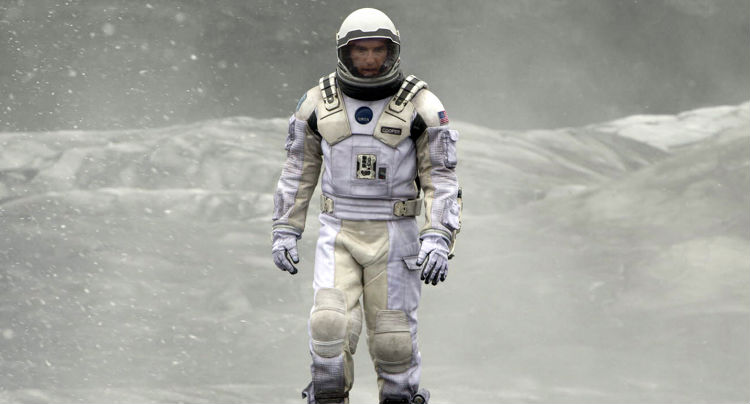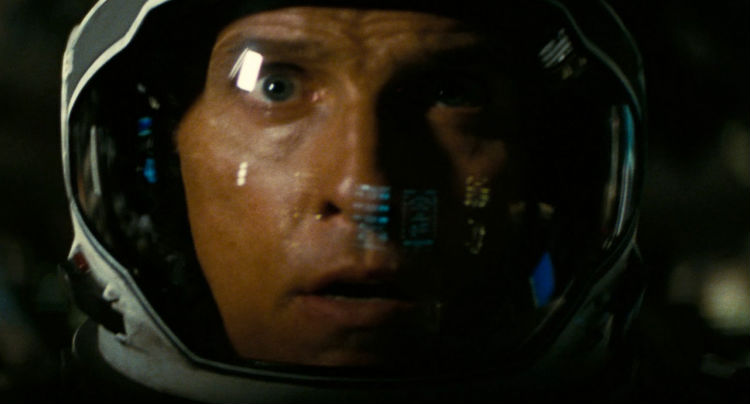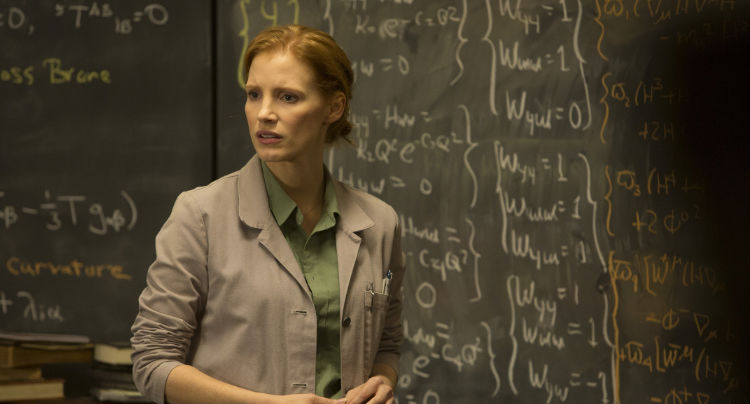
A jaw-dropping spectacle of sci-fi filmmaking weighed down by incoherent plot mechanics.

A jaw-dropping spectacle of sci-fi filmmaking weighed down by incoherent plot mechanics.
Spanning the farthest reaches of time and space, Christopher Nolan’s Interstellar will show you worlds so wondrous you’ll feel the floor fall out from under you and the breath leave your lungs. It’s an experiential, transportive sci-fi film that’s even more spectacular than advertised. The film is made a mess of, however, by a clunky and scatterbrained plot. Nolan burrows deeper than ever into his creativity to build an epic journey into the stars, but more of that energy could have been devoted to making his on-screen explorers, their relationships, and their internal struggles, as inventive and sharply-executed as the visuals. Still, you’ll be floored by Nolan’s outer-space opus, its imagery overwhelming in scope and wonder, its ambition boundless. This is a worthy moviegoing experience, despite its flaws.
Oh, the amazing things you’ll see: alien tidal waves thousands of feet high; planets where time itself gets bent and stretched beyond all recognition; clouds frozen into floating ice chunks; a black hole that looks unlike anything I’ve seen on film. But before shooting off to the edge of the galaxy, the story begins on the ground, in the dirt, on a farm owned by a country-bred former astronaut named Cooper (Matthew McConaughey). He’s raised a brainy daughter, Murph (Mackenzie Foy), and a son, Tom (Timothee Chalamet), with his caring, wise father-in-law (John Lithgow). Earth is plagued by parasitic dust storms called “The Blight” that have ravaged the planet of her crops and diminished the global food supply to frightening lows.

One day, Murph discovers a gravitational anomaly in her bedroom she claims is the doing of “her ghost”, who’s allegedly also been pushing books off her bookshelf. Following clues extrapolated from the anomaly, Cooper and Murph end up at a secret NASA compound where they find Cooper’s old mentor, Prof. Brand (Michael Caine), who consequently needs him to lead a mission through a wormhole near Saturn to track down a team of previous explorers who were tasked with finding a new home planet for the human race. His crew mates are Brand’s daughter Amelia (Anne Hathaway), snarky scientist Doyle (Wes Bentley), the jittery but brilliant Romilly (David Gyasi), and a walking homage to 2001: A Space Odyssey, a talking robot named TARS who looks like a mobile version of the monolith from Kubrick’s masterpiece. Cooper accepts the mission, and doesn’t know when he’ll be able to return to little Murph, who’s resentful and torn to pieces. Nolan cleverly pairs the image of Cooper speeding away from the farm in his truck, kicking up a trail of dust, with audio from a space shuttle countdown and liftoff, a shining example of his audacious filmmaking style.
The plot is rooted in complex physics, metaphysics, relativity, and other concepts richer than the average moviegoer is used to. Nolan and his co-writer and brother, Jonathan Nolan, must have been terrified audiences wouldn’t be able to keep up, because the dialogue is so over-explicated and reiterative (if they reference Murphy’s Law one more god damn time…) your ears will turn beet red. If clarification was the objective, the Nolans achieve the opposite; the incessant exposition and space-time mumbo-jumbo only make things more complicated, and the heady concepts swirling above it all only add to the confusion.
Cluttered as it is, the script poses some fascinating scenarios. A great example is the aforementioned time-bending planet, whose proximity to a black hole means that for every hour Cooper and his team spend on its surface, 7 years pass for everyone else on earth. An unforeseen accident that extends the team’s stay on the planet leads to the film’s most devastating scene, in which Cooper returns to the ship, opens his video mailbox, and discovers the severe consequences of his mistake. McConaughey, convulsing and drowned in tears, breaks your heart. This portion of the film is terrific, because it’s a case in which the big, bombastic on-screen action dovetails perfectly into a moment of raw human emotion. It clicks, and it’s divine.

An older Murph is played by Jessica Chastain, whose poise as an actor makes her the film’s second-biggest boon, next to McConaughey. Cooper and Murph’s inter-dimensional father-daughter relationship is the glue that binds the film, which otherwise would feel like a collection of unrelated sci-fi short stories. Matt Damon enters the fold at around the halfway mark as one of the original astronaut explorers, adding a welcome layer of mystery to the proceedings. Bill Irwin, who voices TARS without an inkling of robotic inflection, lends the film a surprisingly significant amount of warmth and humor. What’s frustrating, though, is that 50 percent or more of the actors’ dialogue seems to be fixated on tiresome exposition, Hathaway being the prime victim of this design choice. She tries valiantly to emote, but labyrinthine chatter about space-travel mechanics constantly gets in her way.
Where the film threatens to fall apart is in its final act, a prosaic series of events sorely lacking finesse. Nolan’s finales often come off as emotionally cold or overwrought because he’s so self-serious and obsessed with juggling pathos, plot twists, philosophy, and mind-bending visuals all at once. Interstellar is sadly no exception, with a climax so disorganized that you’re frantically trying to shuffle things around in your head to make sense of it all, too preoccupied with deciphering logistics to feel the full impact of Nolan’s message, which he means to be poignant, but ultimately thuds. The shame is, the message is a beautiful one, in which we’re asked to consider the preciousness of the time we have with our family, and confront the inevitability that one day, we will all drift apart into eternity. I was ultimately touched by the heart of the story; I just wish I didn’t have to shove so much space junk out of the way to get there.
Nolan shot Interstellar in 35mm, VistaVision, and IMAX 70mm, which gives the breathtaking imagery a sort of dirtiness and inelegance that fits the story well, while sufficiently supporting the grandiosity of his vision. The mind-boggling proposition of visually representing four or more dimensions on-screen has always been fascinating to me, and Nolan and his team (including Her cinematographer Hoyte van Hoytema) have concocted the most awe-inspiring version I’ve seen. It’s encouraging to see a big budget supporting such an artful, sincere endeavor. Flying under the radar, surprisingly, is Hans Zimmer, whose tasteful, nuanced score is one of his best, floating in and out of scenes fluidly and emphasizing only when appropriate. His notorious blaring, thrummy horns are replaced by sensitive, heavenly organs, which is a saving grace, because the last thing Interstellar needs is more chaos to further obstruct its purpose.